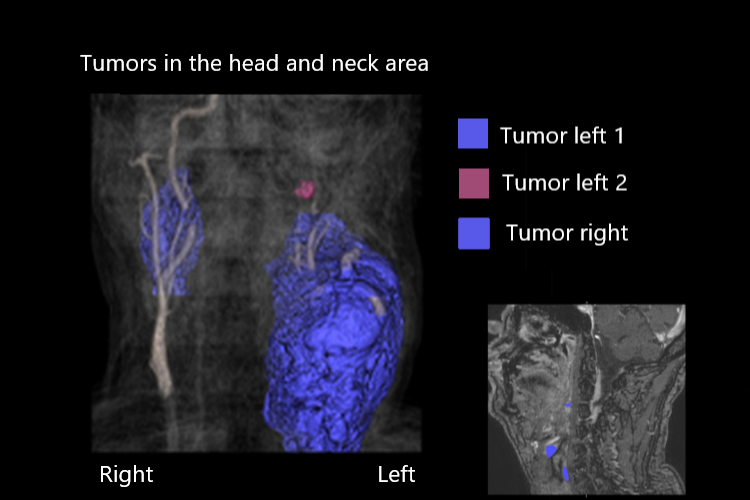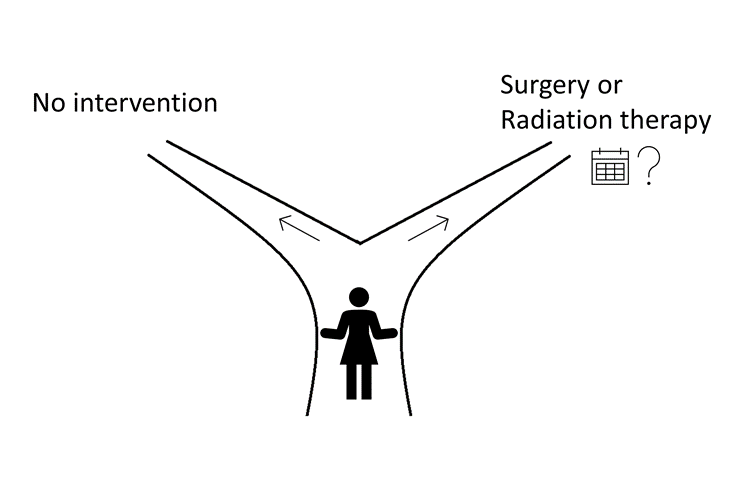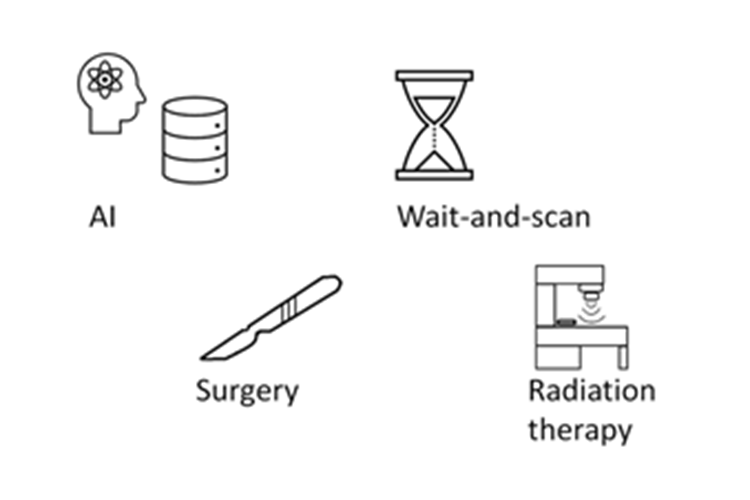
Motivation
Clinical decision making for patients diagnosed with a rare type of tumor in the head and neck (i.e., paraganglioma) is extremely challenging because the development process of these typically slow-growing tumors is uncertain. In case of progressive development, required treatment can consist of surgery or radiation therapy. However, it is not always necessary to use these treatments on these tumors, which are most often benign. This is for instance the case if a tumor stops growing and does not cause any symptoms. Whether treatment is needed sometime in the future and when that will be, is most often uncertain up front. Therefore, treatment is postponed until at least persistent growth of the tumor is demonstrated or until the tumor starts to cause (irreversible) symptoms. The development of the tumor is monitored using a wait-and-scan policy, which consists of taking MRI scans and possibly additional research on a regular basis.
Forecasting the future development of paraganglioma allows us to make better decisions about the moment of treatment and follow-up. By doing so, unavoidable treatment can be given earlier on, preventing unnecessary damage caused by the tumor and potential increased risks associated with a postponed treatment. This will greatly improve the quality of life of the patients. At the same time, this way, unnecessary future surveillance may be prevented, which may make the future trajectory less stressful for the patient.

Challenge
The main challenge here is to forecast whether the patient will need treatment and if so, when. Key to this will likely be to be able to predict the growth of the paraganglioma. In addition, forecasting the probability of possible irreversible complaints at a certain moment in time caused by the tumor such as hearing loss can help in better pinpointing the moment to proceed to treatment.

Approach
Currently, the experience of a multidisciplinary team of clinicians in combination with the requests of the patient are the main drivers in deciding when to proceed to treatment. A machine learning model could possibly make good predictions about how these paraganglioma develop together with expected onsets of (irreversible) complaints, and thereby help to pinpoint a good moment for treatment. As much is at stake in making these decisions, it is necessary to not only give patient and clinician a prediction, but also provide them with an understanding of how this prediction came about so that they can make an informed decision together. That is why we strive to develop an explainable model, leveraging genetic programming and deep learning techniques.
